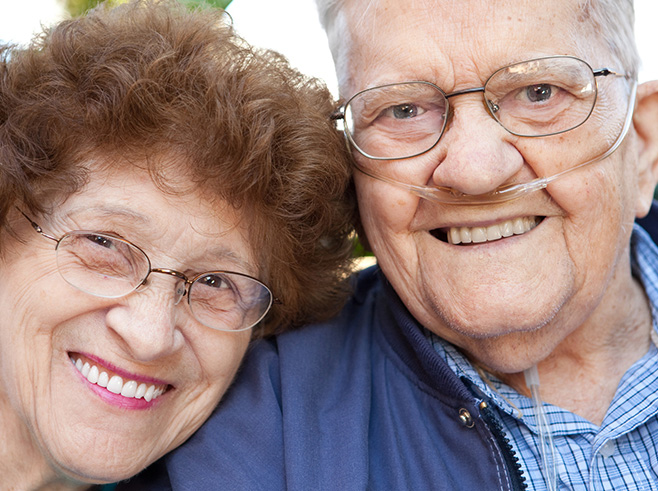Imagine what it would feel like if your head was held underwater and you couldn’t get a full breath, or if you were so exhausted that you couldn’t muster up the energy for daily activities like laundry or grocery shopping. This is what life is like for many people living with COPD — but it doesn’t have to be that way.
What is COPD?
Imagine what it would feel like if your head was held underwater and you couldn’t get a full breath, or if you were so exhausted that you couldn’t muster up the energy for daily activities like laundry or grocery shopping. This is what life is like for many people living with COPD — but it doesn’t have to be that way.
What is COPD?
Chronic obstructive pulmonary disease (COPD) is a progressive lung disease that, over time, makes it increasingly difficult to breathe. Each year 12 million U.S. adults are diagnosed with COPD, and 120,000 die from it. Another 12 million are thought to have undiagnosed COPD.
COPD includes two main conditions: emphysema and chronic bronchitis. In emphysema, the air sacs in the lungs are damaged and enlarged, causing breathlessness and preventing the body from getting the oxygen it needs. With chronic bronchitis, the lining of the airways is constantly inflamed, causing the lining to swell and produce more mucus, which makes it hard to breathe.
You can take steps to prevent COPD before it starts
can take steps to prevent complications and slow the progression of the disease, including pulmonary rehabilitation.
Mary Ann Penales, registered respiratory therapist and COPD navigator at Sharp Grossmont Hospital, offers the following tips for people with COPD.
Learn how COPD affects your breathing and life in general
A COPD diagnosis is not a death sentence. There are many ways to control symptoms so you can feel better, be productive and enjoy life as normally as possible. Empower yourself by using the education, tools and resources provided by your doctor or health care provider.
Avoid triggers
If you smoke, quit now.
Smoking is the leading cause of COPD. If you smoke, talk to your doctor about programs and products that can help you quit. If you have trouble quitting on your own, consider joining a support group.
Stay active and exercise regularly
Regular exercise improves the muscle strength needed for breathing and blood circulation. Pulmonary rehabilitation programs provide an exercise regimen tailored to your needs, as well as education on breathing techniques and reducing breathing problems.
Create an action plan
Work with your health care provider to develop a COPD action plan. These steps and goals should be realistic, achievable, and ones to which you can easily adhere.
Control your breathing learn to relax and conserve your energy. Stress and anxiety can trigger breathlessness. Seek out activities that can relax your mind and body, such as yoga, meditation and listening to relaxing music.
Use oxygen during the day and a breathing machine at night
When you have COPD, using oxygen can make your daily functions more bearable and can help you to perform normal daily activities. Portable oxygen tanks can be used on the go while running errands or traveling. At night, using a CPAP/BIPAP or noninvasive ventilator can help with sleep apnea and hypercapnia, or elevated carbon dioxide levels caused by inadequate breathing.














